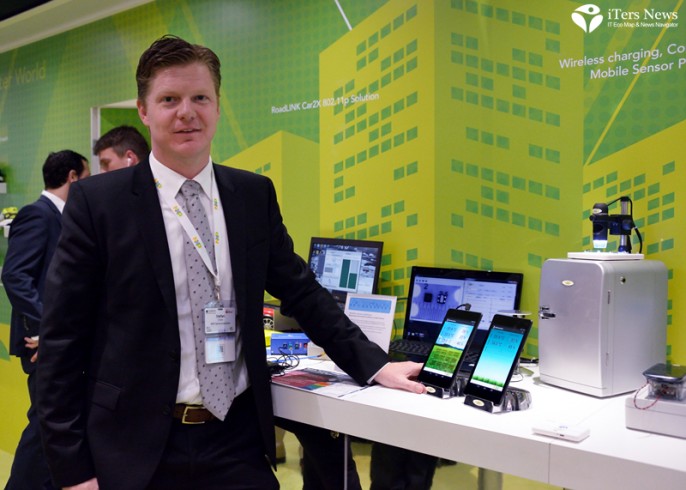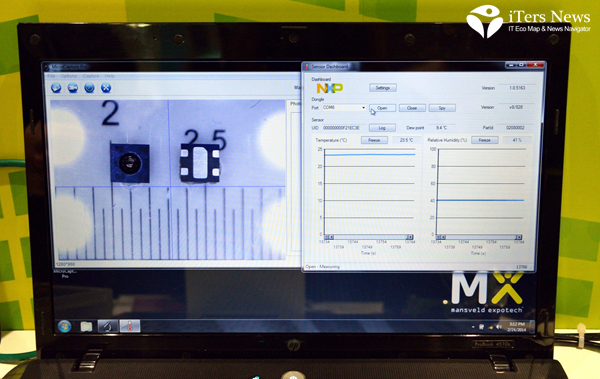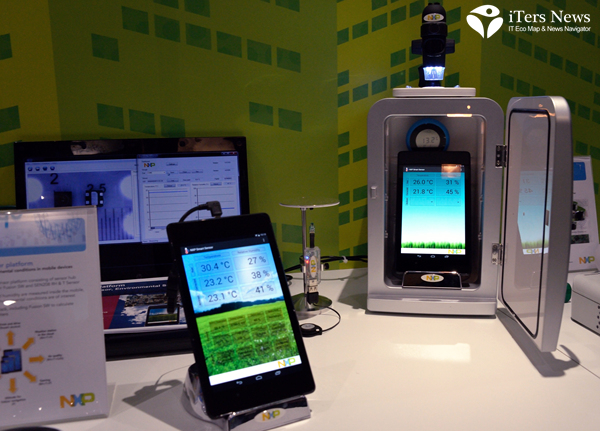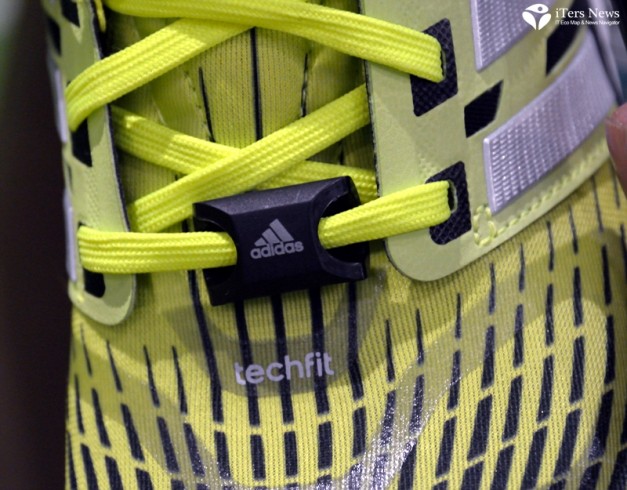(iTers News) - Cars and smart phones are the hottest growth areas for semiconductor chip makers. High-performance mixed signal chip maker NXP Semiconductors is well poised to tap into the market potentials.
A growing number of top of the line smartphones come built with more and more of sensor and security chips, as phone makers are looking for innovative and intuitive user interface technologies to differentiate their product offerings from competition.
Sensor and security chips are two of the most crucial technology enablers that drive UI innovations.
Cars are also being built with a great deal of semiconductors chips, as car makers are not only scrambling to replace many bulky and heavy mechanical parts with chip-based electronic systems, but also to embed many connectivity and intuitive UI technologies in a car dashboard.
That’s where the forte of NXP Semiconductors comes in.
“We have products called as Sensor Hub, which are moving more and more into mobile devices. You have quite different sensors in your mobile phone. You are able to detect whether it is humidity or temperature, “Steve Owen, senior vice president, sales with NXP semiconductors.
“Also, we will start to see audio aspects, voice activation on the phone. It becomes more attractive and more interesting. NXP has the ability to do with analog and digital mixed signals that allow us to design microcontrollers with mixed signal products,” added he.
Smart Sensor Hub
For example, NXP is a developer of contactless NFC, or near field communications chip, which is widely being used in mobile phones as well as banking and transportation cards.
As smartphone makers are seeking innovations on their user experience features, NXP sees new market opportunities in its smart sensor platform solution. Coming complete with a sensor hub, a sensor fusion software and an environmental sensor, the platform can be used with a smartphone to read ambient temperature around phone users in real time and display it a phone screen.
Key to this system is a software algorithm that can calculate internal temperature of a smart phone as a CPU and a battery system heat and then reference it to an external temperature sensor to automatically correct them to get real ambient temperature.
“We are adding an environmental sensor to a well-known standard inertia sensor that is built into a sensor hub. That opens up a whole new application for environments, which can be integrated into a phone. It can make your smartphones and tablet PCs a lot smarter, “ said Stefan Crijns, customer support manager with Emerging Business, NXP Semiconductors.
For example, NXP’s first product on its roadmap comes complete with a smart temperature and a smart humidity sensor. Once embedded into a smartphone, the sensor solution not only reads and displays temperature and humidity information inside the phone, but also pops up external as well as ambient temperature and humidity information readouts on a phone screen.
“A phone warms up as CPU, battery, and LCD backlight get hot. But, end-users can’t use that information because it only tells them what the phone is dong. They want to know the ambient temperature; what is the temperature around him. That’s why we have a sensor fusion software coming in. The external sensor just tells you a reference, and then our algorithm calculates what an actual ambient temperature is. It’s a dynamic correction on all information which is available inside the phone,” added he.
NXP’s smart sensor platform has huge market potentials, as it can combine with other types of sensors like gas and pressure sensors to monitor real-time weather and pollution information. The solution also can be used in a gaming, because it tells an avatar either to wear sweats when temperature is low, or wear short sleeves when the temperature is high.
NFC technology is another sure bet. After it reaches critical mass in smartphone market for sharing data and other security issues, NFC is expanding its way into other applications markets like cars and banking. .
NXP has already carved out niches in security and personal identification markets for cars, supplying RF ID keyless remote control technologies for top-tier car models. For example, the technology can allow a car driver to remotely open a car door and then ignite a car engine.
As a growing number of cars are coming up with an in-vehicle network, security is rapidly emerging as a hot issue. Moreover the car industry is now working on the commercialization of a Wi-Fi technology-based car to car, or car to infrastructure network technology. That’s where the beauty of the NFC technology lies in.
“We move with NFC radio (technology) into some of the high-end cars. Now, you can connect a NFC-enabled phone directly with a car. The automotive industry is extremely interested in the security product, because of the connection to outside of car. You start to get cars talking to the infrastructure and cars. Also, GSM signals are coming into the car. You have an in-vehicle network. This in-vehicle network needs a security product. This is something you are going to see more and more of car with security chip based on the same technology in the banking,” said Steve Owen, senior vice president, sales with NXP.
Yet, he bets that it will take a few more years away before the NFC technology becomes an underlying technology for a smart mobile wallet for mobile credit card for several reasons. Coming first is conflicts of interest among banks and other financial institutions about their brand exposures. Implementing it still comes costlier, too, compared with normal RF ID technology, which just costs one or two cents. Concerns over security are also dragging its feet on the implementation of the NFC technology in the mobile banking credit card.
NFC on the car
“The challenge for banks and banking associations is that they like to see their brands. Typically, they don’t allow one brand in the phone. What we need to do is how we can get more than one banking brands into one chip. Today, that’s quite difficult. It will be going to take a quite few more years before we see it in a number of banking car usage,” explained senior vice president Steve Owen.
Because it has more to do with money transactions, high security level is also needed. The need to implement a high-level security costs dearly, too.
Asked about what is the main challenge facing chip makers in their silicon implementation into a smart phone area, Steve Owens said that it is increasingly tough to integrate more of functionality into an ever progressive smaller mobile phone form factor. “Moving into the mobile phones, you got different problems. Mobile phone companies across the world want to make their products smaller, thinner, and lighter. They want to make performances faster, want a battery to last long time. They want security and good connectivity. The challenge is real estate. How much space you need in your phone? How much energy you will take from a battery? How fast you want to make your products while making it secure? That’s our challenge. That is not going to change,” he stressed.
The applications of the NFC technology do not stop there. The chipmaker has carved out new applications in the merchandise retailing arenas. Once embedded into a footwear’s tag, it can communicate with a NFC-enabled smartphone, allowing the smart phone user to keep track of more detail information on the footwear. For example, if the user purchases a NFC-enabled Adidas footwear and then download Adidas apps on his phone, he not only can track and compare the specs of its footwear with other models, but also doubles his NFC-enabled smartphone as a fitness and healthcare gear, keep track of how many kilometer he walks or how much calorie he spends.
(Photos and Videos by JH Bae)









